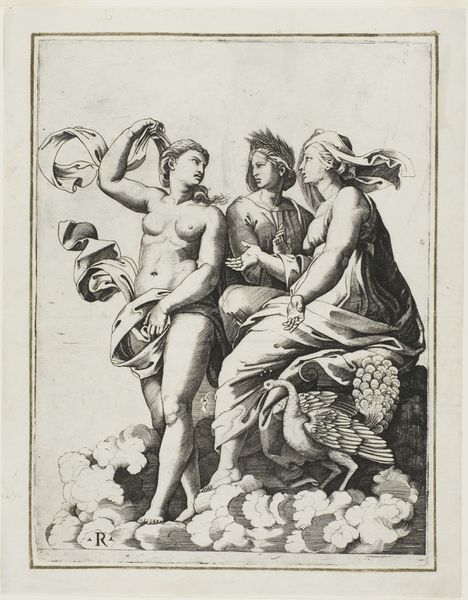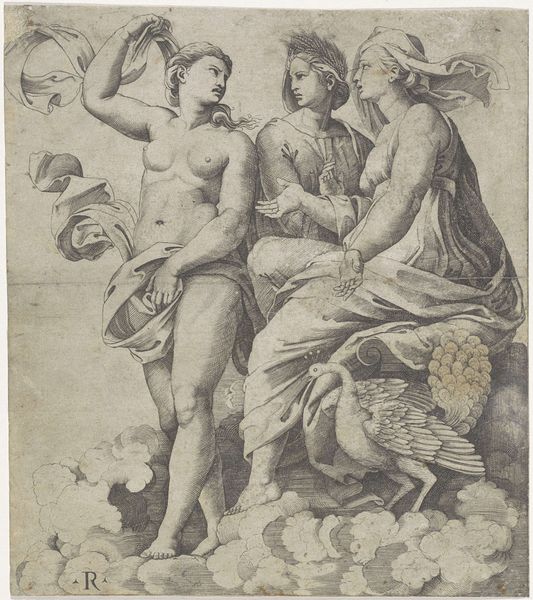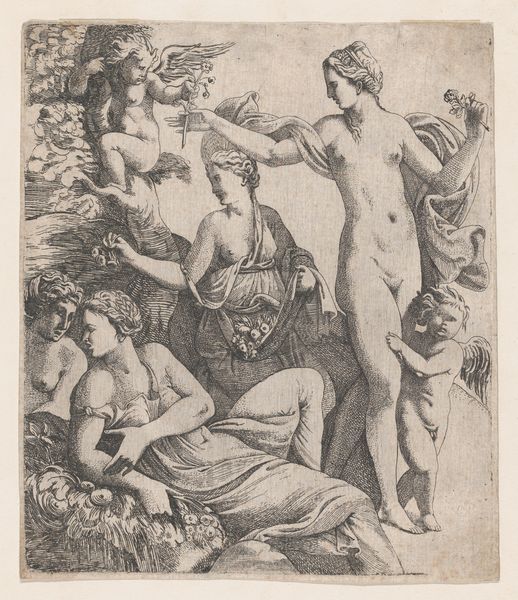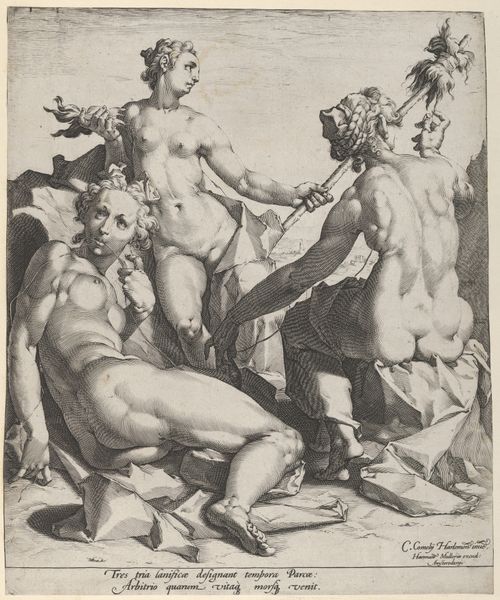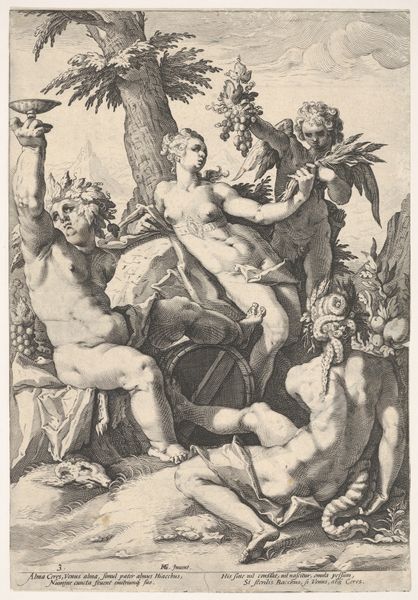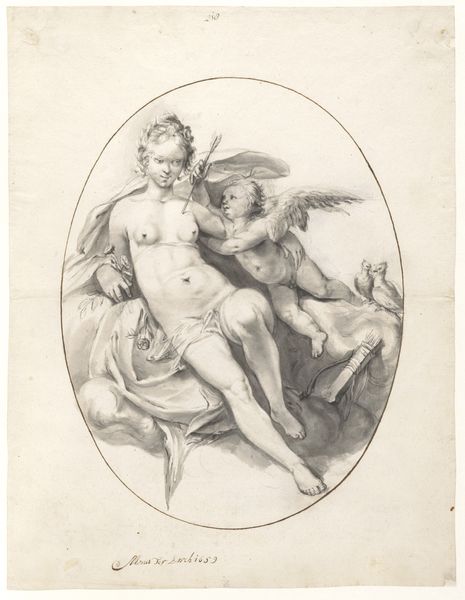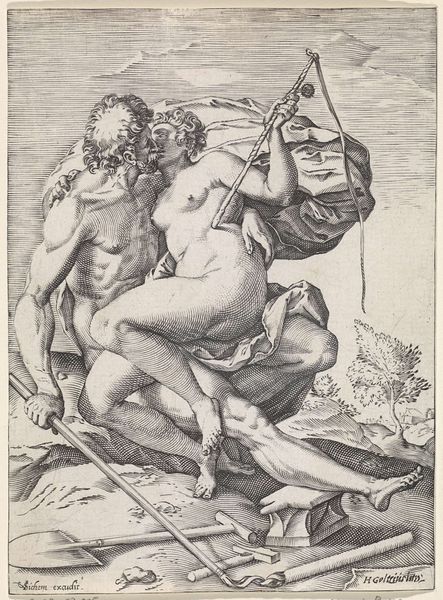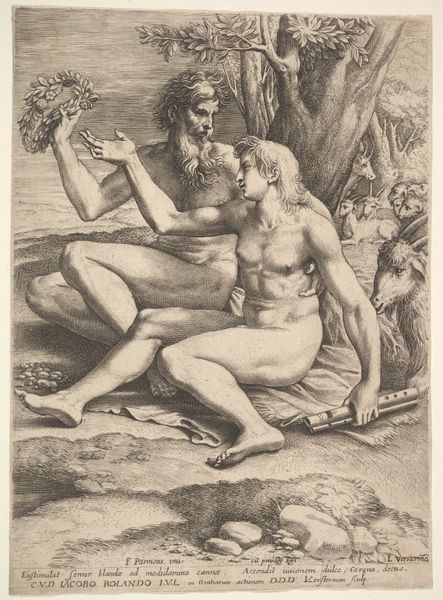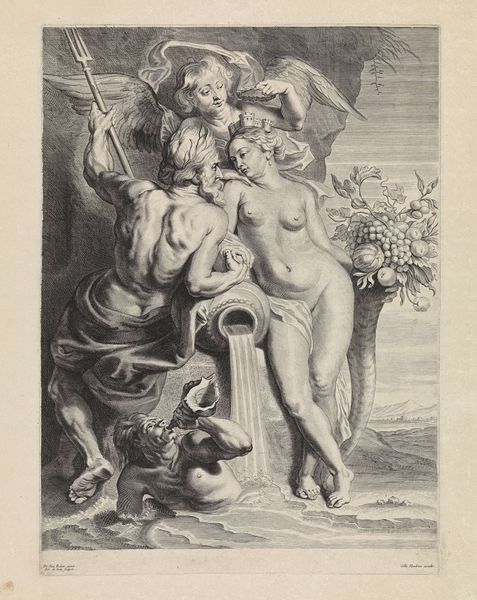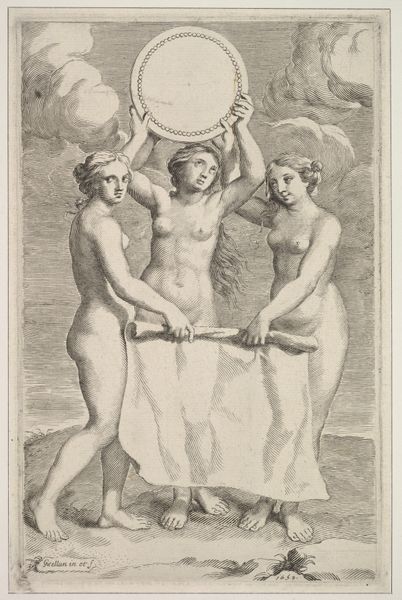
drawing, print, paper, engraving
#
drawing
#
allegory
# print
#
figuration
#
paper
#
11_renaissance
#
nude
#
italy
#
engraving
Dimensions: 249 × 197 mm
Copyright: Public Domain
Editor: Here we have "Juno, Ceres, and Psyche," a Renaissance engraving of indeterminate date by Marco Dente, currently housed at The Art Institute of Chicago. I am immediately struck by its formal composition and use of allegorical figures... what do you see in this print? Curator: As an historian, I find this print fascinating as an example of how classical mythology was being reinterpreted and repurposed within the social and cultural context of the Renaissance. Prints like this one disseminated classical imagery beyond the elite circles who could afford original paintings or sculptures. What impact do you think the medium had on the reception of classical subjects like Juno, Ceres and Psyche? Editor: Well, as a relatively accessible medium, prints definitely democratized art. Instead of being confined to the collections of the wealthy, images and ideas circulated much more freely among the burgeoning merchant classes and educated elites. So what narratives were associated with those specific figures, and how might have viewers at the time reacted to them? Curator: That's an insightful question! Juno, Ceres, and Psyche, representing marriage/power, fertility/agriculture, and the soul respectively, suggest a thematic concern with fundamental aspects of human life. The nudity also speaks to the Renaissance interest in classical aesthetics and the idealized human form. It’s important to remember that interpretations can evolve over time, shaped by the viewer's own cultural framework. Are you familiar with other versions of the story of Psyche that were also circulating at this time? Editor: I've read a bit about Apuleius's version! Thinking about it, what's most striking is how the print distills very specific attributes and their relations down into simplified, generalized types that speak about universal ideas of marriage, nature and spirit. It's really impressive how Dente uses this to elevate printmaking as a transmitter of ideas! Curator: Indeed. Dente’s “Juno, Ceres, and Psyche” demonstrates how prints served not just as replications but also as interpretations of classical culture within the shifting landscape of Renaissance society. It's made me think about how modern media re-contextualizes and even weaponizes iconic figures. Editor: Absolutely. Understanding art in its social context helps us see how these stories keep getting retold in ways that reflect contemporary values. It's a never ending feedback loop.
Comments
No comments
Be the first to comment and join the conversation on the ultimate creative platform.
